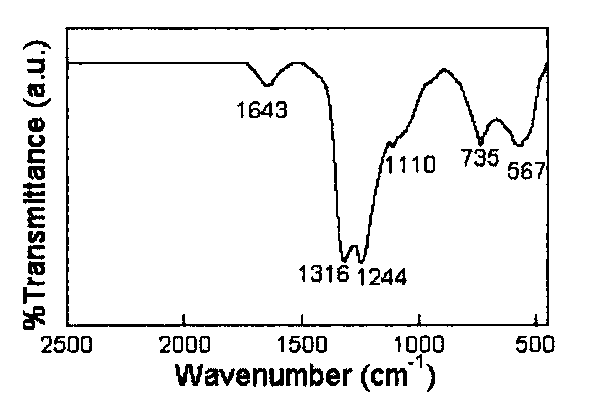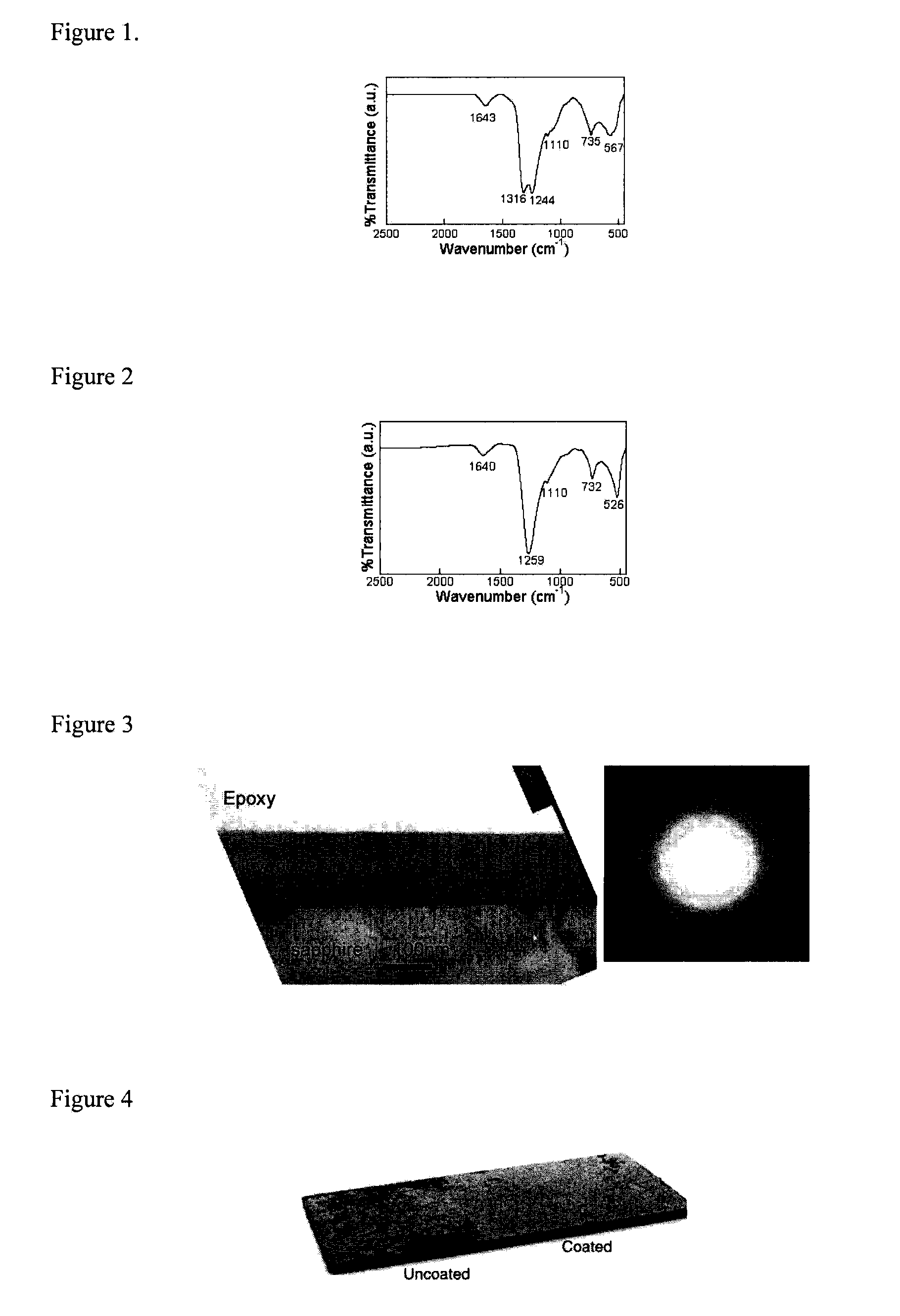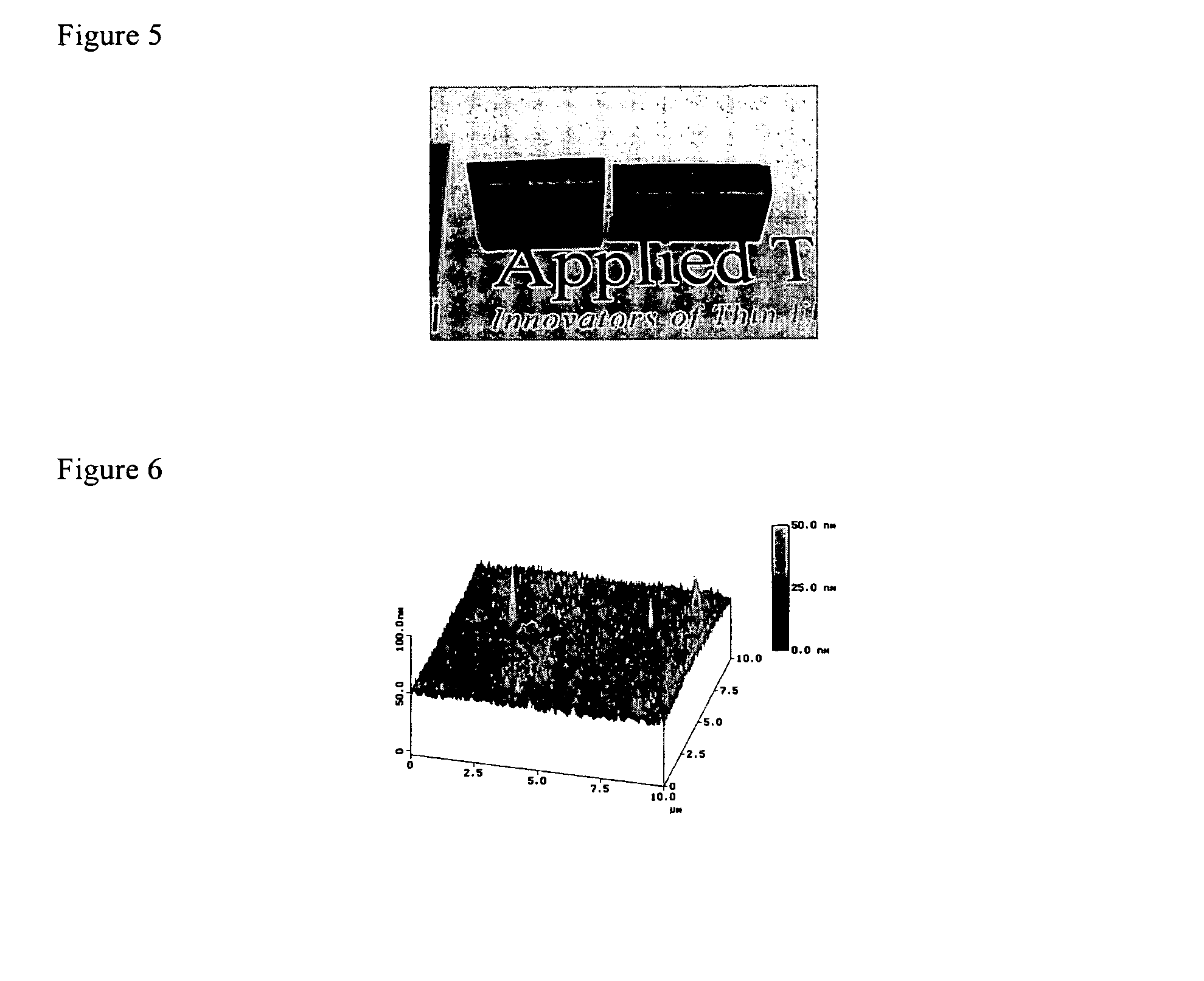Aluminum phosphate compounds, coatings, related composites and applications
a technology of aluminum phosphate and compounds, applied in the field of aluminum phosphate coatings, can solve the problems of inability to use as a coating prior art coatings are not durable under certain atmospheric conditions, and can not be used as coatings for protecting substrates from corrosion or oxidation at elevated temperatures. , to achieve the effect of reducing the total volume of plastics or polymers, reducing friction, and reducing cos
- Summary
- Abstract
- Description
- Claims
- Application Information
AI Technical Summary
Benefits of technology
Problems solved by technology
Method used
Image
Examples
example 1
[0208]One preferred method for depositing an amorphous aluminum phosphate coating is with a clear chemical precursor solution, with the solution preferably containing an aluminum salt and phosphate esters in an organic solvent. A solution used to deposit amorphous aluminum phosphate coatings with a 2 to 1 aluminum to phosphorus ratio is made by dissolving 264 g of Al(NO3)3.9H2O in 300 mL ethanol. In a separate container, 25 g P2O5 is dissolved in 100 mL ethanol. These solutions are mixed together. The resulting solution is diluted with ethanol to a concentration of 0.2 moles Al / L solution. This solution is used to deposit amorphous aluminum phosphate coatings on substrates.
example 2
[0209]A solution used to deposit amorphous aluminum phosphate coatings with a 4 to 1 aluminum to phosphorus ratio is made by dissolving 528 g of Al(NO3)3.9H2O in 300 mL ethanol. In a separate container, 25 g P2O5 is dissolved in 100 mL ethanol. These solutions are mixed together. The resulting solution is diluted with ethanol to a concentration of 0.2 moles Al / L solution.
example 3
[0210]A stainless steel plate cleaned with detergent and water followed by ultrasonication in methanol. Dipped in solution prepared in example 1. Dried using a heat-gun. Dried sample is heated at 400° C. for 1 min and cooled to room temperature. The cured stainless steel plate surface showed strong iridescence. This type of inventive material coatings may be applied as decorative coating on articles.
PUM
| Property | Measurement | Unit |
|---|---|---|
| temperature | aaaaa | aaaaa |
| temperature | aaaaa | aaaaa |
| thickness | aaaaa | aaaaa |
Abstract
Description
Claims
Application Information
 Login to View More
Login to View More - R&D
- Intellectual Property
- Life Sciences
- Materials
- Tech Scout
- Unparalleled Data Quality
- Higher Quality Content
- 60% Fewer Hallucinations
Browse by: Latest US Patents, China's latest patents, Technical Efficacy Thesaurus, Application Domain, Technology Topic, Popular Technical Reports.
© 2025 PatSnap. All rights reserved.Legal|Privacy policy|Modern Slavery Act Transparency Statement|Sitemap|About US| Contact US: help@patsnap.com



